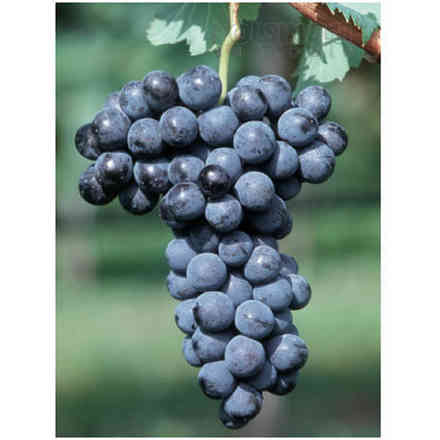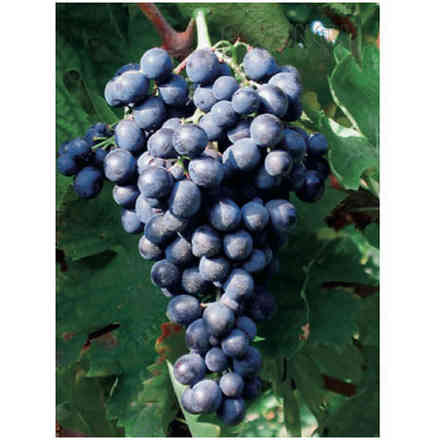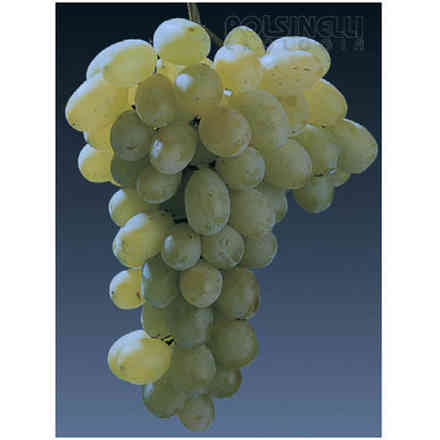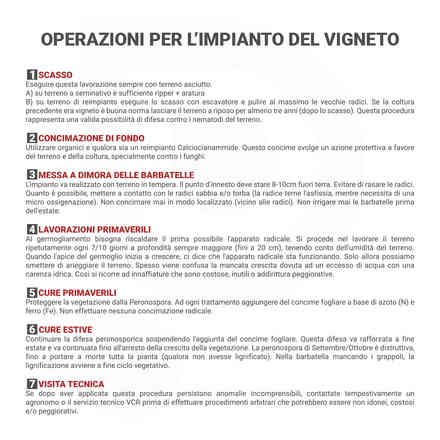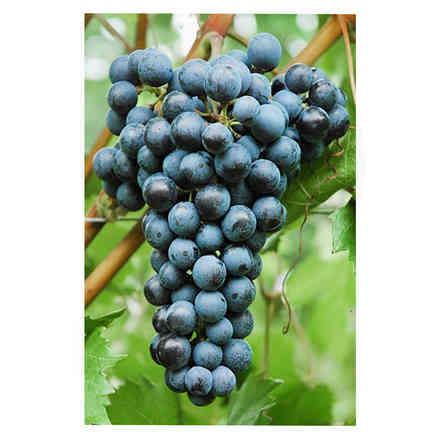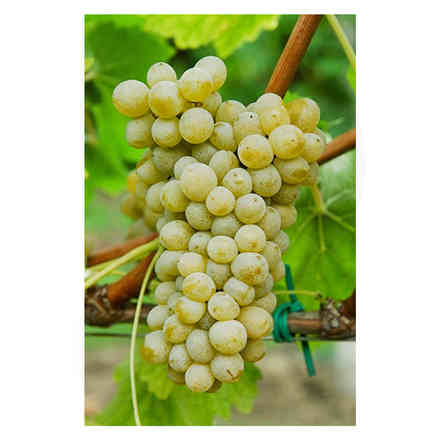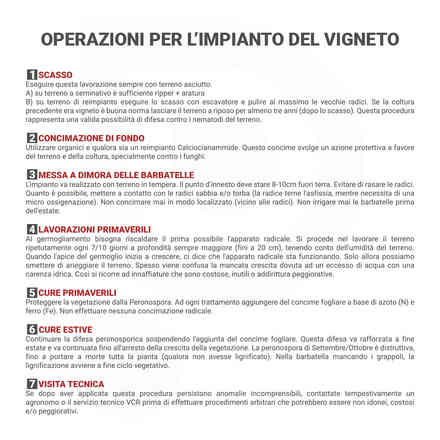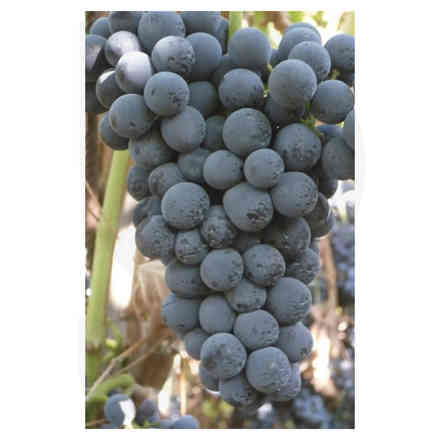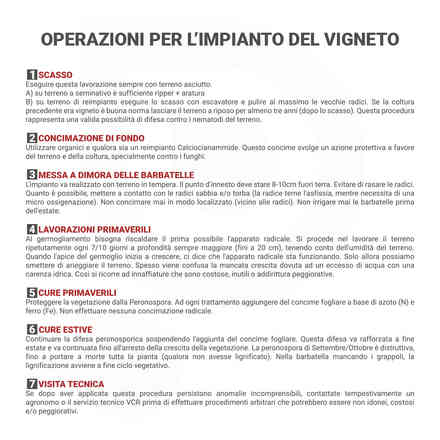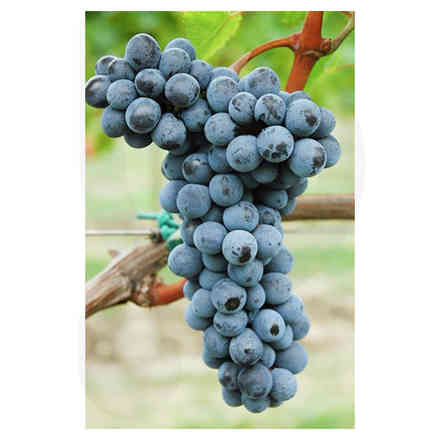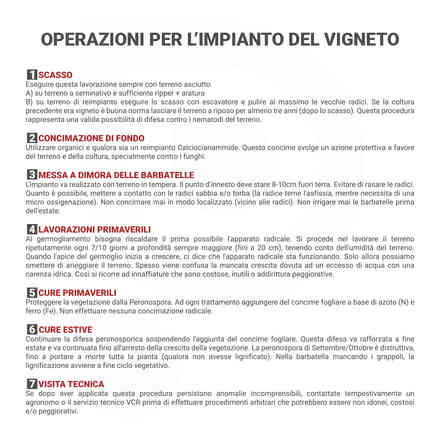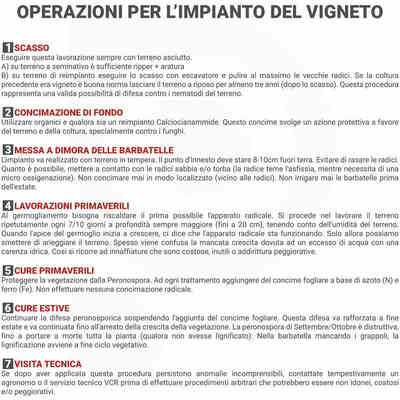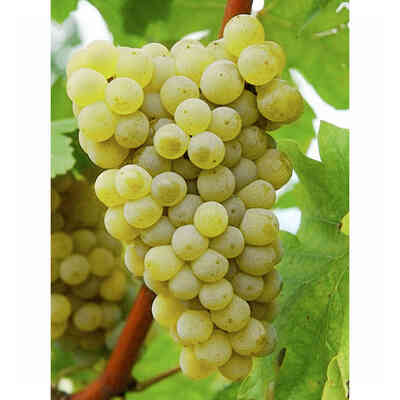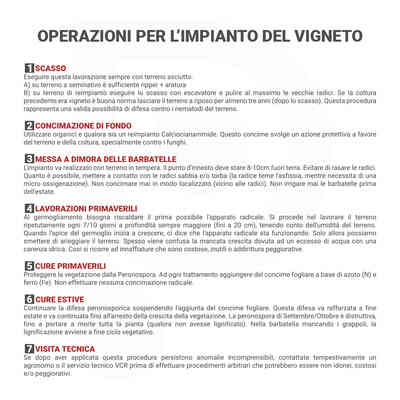
Cabernet Volos (10 pieces)
Description
CABERNET VOLOS (10 pieces)
These are protected varieties with a monopoly, the reproduction or multiplication of which is prohibited without the consent of the breeders, and with the purchase you undertake not to reproduce or multiply the variety.
Rootstock 1103P - K5BB - S04 - 140RU - 420A (We will send you the rootstock available at the time)
Resistance characteristics: High to Downy mildew, medium to Oidium
AROMATIC PROFILE
Excellent capacity for sugar accumulation and consequently good alcohol content, as well as acidity. Intense and complex, fruity aroma, closely reminiscent of the Cabernet parent , however with little presence of the herbaceous aroma . Intense color and really interesting tannins. The wine lends itself very well to aging in barrique which harmoniously completes its structure and aromas.
AMPELOGRAPHIC DESCRIPTION
Variety resistant to downy mildew and tolerant to powdery mildew, suitable for the pedoclimatic conditions of central-northern Italy.
- Sprout: 10-20 cm
- Shoot Apex: semi-open / open, with low hair density, and anthocyanin pigmentation at the edges.
- Apical leaves (from 1st to 3rd): pentagonal, green but with a slightly red and almost glabrous margin.
- Basal leaves (from 4th onwards): orbicular and hairless shape.
- Sprout axis: curved.
- Herbaceous shoot: semi-erect posture; of elliptical cross section, striated outline; internodes green and red on the dorsal side, and green on the ventral side; knots with green and red coloring on both sides. Hairless nodes and internodes.
- Tendrils: bifid, very long, intermittent, 2 or fewer consecutive tendrils.
- Flower: hermaphrodite, five fully developed and erect stamens, fully developed gynoecium, detachment of the normal corolla, self-fertile.
- Adult leaf: medium in size, orbicular in shape and generally with five lobes. The petiole sinus is open and with a staple or V-shaped base. The lateral sinuses aredeep. Both leaf pages have a red color up to the second bifurcation of the main veins. The profile of the flap is V-shaped, surface with medium blistering and medium depressions; ripples present. The leaf margin has teeth of medium size, medium-short length and with both sides convex. Both leaf pages are hairless.
- Petiole: slightly longer than the median vein of the leaf.
- Autumn color of the leaves: yellow-reddish.
- Industrial ripe bunch: medium size (130-200 cm, 70-190 g, average weight 130 g), cylindrical, with an always present medium wing; compact; short-medium peduncle; weak resistance to de-stemming.
- Berry: average size, average weight 1.7 g, spheroidal shape, uniform within the bunch. The skin is thin-medium with high bloom, blue-black in color. The pulp is soft or slightly firm, with a herbaceous flavor. Colorless juice.
- Grape seeds: medium length and low-medium weight.
- Woody branch: elliptical cross section, striated surface; brownish color, no lenticels; medium-long internodes (about 13-14 cm), diameter about 9-10 mm.
- Trunk: of medium vigor.
VEGETATIVE PHENOMENA
- Germination: medium, second / third decade of April.
- Flowering: medium, third decade of May / first decade of June.
- Grape ripening: medium, first / second decade of September.
CULTIVATION CHARACTERISTICS AND ATTITUDES
- Vigor: medium, rising vegetation.
- Training system: suitable for any type of training, Guyot and spurred cordon recommended.
- Production: regular and constant.
- Real basal fertility: high (basal fertility / real fertility = 1.01).
- Average number of inflorescences per shoot: 2.
- Resistance to abiotic and biotic stress: it resists winter lows down to -24 ° C. Resistant to downy mildew, tolerant to powdery mildew. On average sensitive to botrytis and rot.
- Behavior with respect to multiplication by grafting: no problems of grafting disaffinity reported on 1103 Paulsen, Kober 5BB, SO4. Yield in the nursery: 77% of SO4.
RULES TO PLANT A VINEYARD
1. PLOW
You must perform this operation always with dry soil
A) On arable land is generally sufficient to ripper + to plow
B) On planting soil is generally sufficient to plow with an escavator and to clean the old roots.
If the previous crop was a vineyard, it is a good idea to leave the soil fallow for at least three years (after plowing). This procedure represents a valid possibility of defence against soil nematodes.
2. SOIL FERTILIZATION
Use organics and if it is a reimplantation, use Calciumocyanamide.
This fertiliser has a protective effect on the soil and the crop, especially against fungi.
3.PROPAGATING GRAPE VINE CUTTINGS
The planting should be carried out in temperate soil. The grafting point should be 8-10 cm above ground. Avoid shaving the redices. As much as possible, put sand and/or peat in contact with the roots (the root fears asphyxiation, while it needs a micro-oxygenation). Never fertilize in a localized manner (near the roots). Never water the rooted cuttings before summer.
4.SPRING WORKS
When sprouting, the root apparatus must be heated as soon as possible. Work the soil repeatedly every 7/10 days at increasing depth (up to 20 cm), taking into account the moisture of the soil. When the apex of the bud starts to grow, it means that the root system is functioning. Only then can we stop watering the soil. Failure to grow due to access to water is often confused with a lack of water. This is why watering is used which is expensive, useless or even worse.
5.SPRING CURE
Protect vegetation from Peronospora. To each treatment add nitrogen (N) and iron (Fe) foliar fertilizer. Do not make any radical fertilization.
6.SUMMER CURE
Continue with the defense against Peronospora by suspending the addition of the foliar fertilizer. This defense should be reinforced in late summer and should be continued until vegetation growth stops.
The September/October blight is destructive, to the point of bringing death to the whole plant (if it has not lignified). The rooted vine lacks clusters, so lignification occurs at the end of the vegetative cycle.
7.TECHNICAL VISIT
If incomprehensible anomalies persist after this procedure, contact an agronomist or the VCR Technical Service promptly before carrying out arbitrary procedures which may be unsuitable, expensive and/or worsening.






















